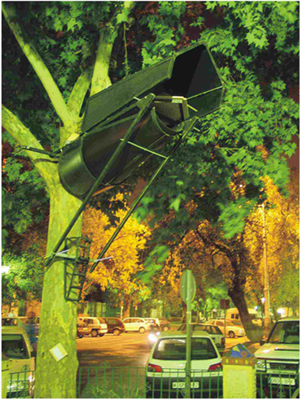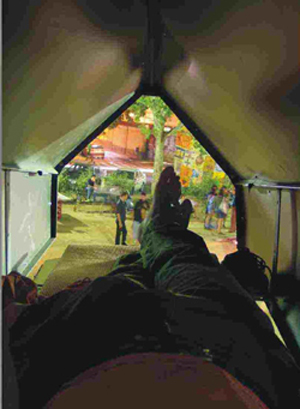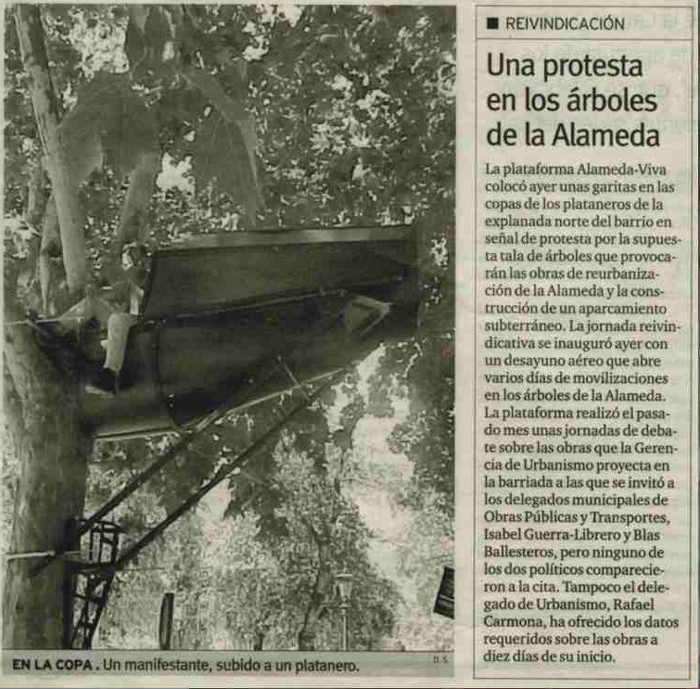The
project Insect-House came about when the platform Alameda Viva,
a platform with which I share certain personal and intellectual
affinities, invited
me to show my support for their act of resistance by occupying some
of the trees of La Alameda, in Seville.
By following the fundamental premises of efficacious urban guerrilla,
I designed the shelters with parts that allow for an immediate construction.
The outside shell would protect us from possible aggressors using
rubber balls and pressured water.
The
nocturnal building of the shelter requires about four people and
takes two
hours at most. The first time we built it, eight people came to
help, given the lucid and participative spirit the occasion generated;
Salita, Pepe, Raul, Manu,
Jaime, Jose, Herman, and Santi.
The
bottom part of the shelter is usually 4.5 meters off the ground
and serves as a stomach/storage space; the top part has a sliding
shell for protection. These, together with the parts that fix and
hold the shelter to the three, form a structure that has a particular
insect-ventilation flowing through it continuously: this feature
allows for a pleasant inhabitation in the Summer months, which is
when our temporary occupations tend to take place.
It is not necessary to justify what should be obvious concerning
the inability of
urban planning to define the development and growth of a city that
finds itself
incapable of action given the changes in political attitudes, which
means an
absolute submission to the demands of the market and ground speculation.
The implicit goal of the action, and my personal ambition along
with those of colleagues with a similar attitude, was to remind
people and groups that, even if their voice has been considerably
quieted, they are still able to act and decide, that they have a
say, in the development of the city and on how this development
will be carried out.
Beyond a mere ecological attitude concerning the protection of threes
to be cut down, this is a strategy of opposition to plans directed,
and often imposed, on the population and its style of urban life,
which affect not only the inhabitants of the neighbourhood, but
also the vast and diverse groups of visitors who frequent La Alameda
neighbourhood.
|


|



